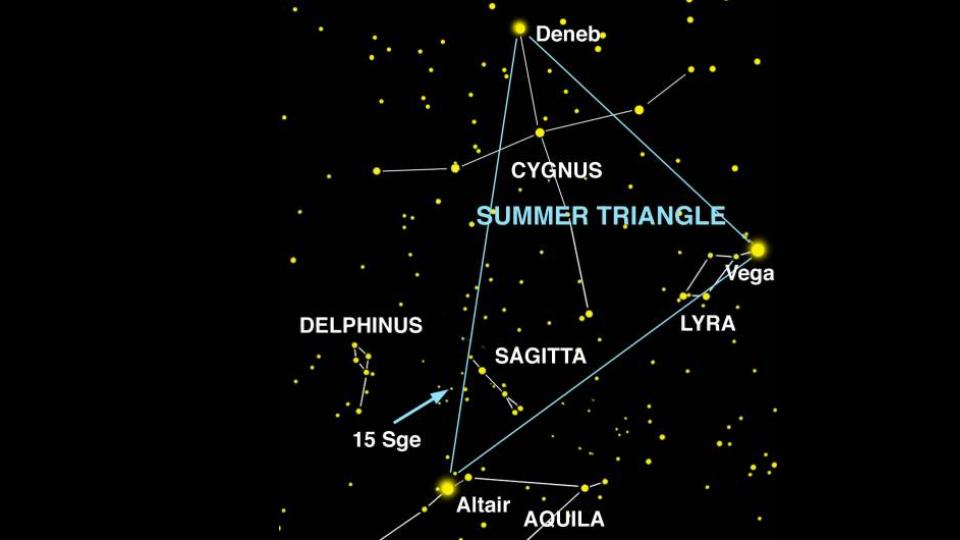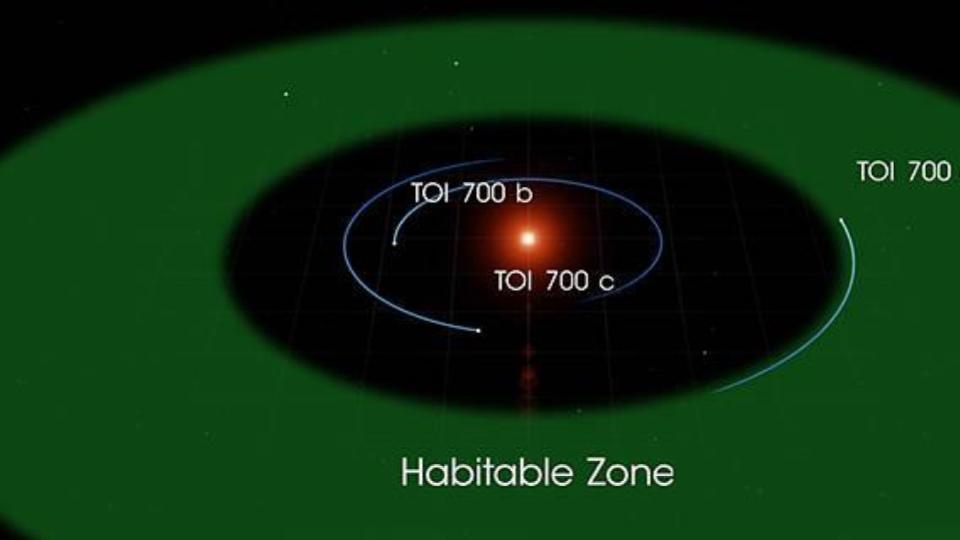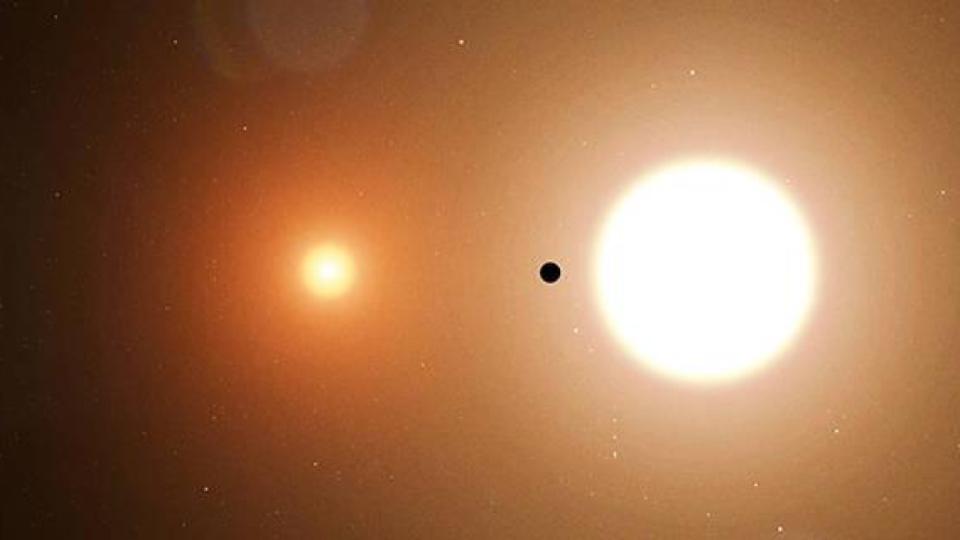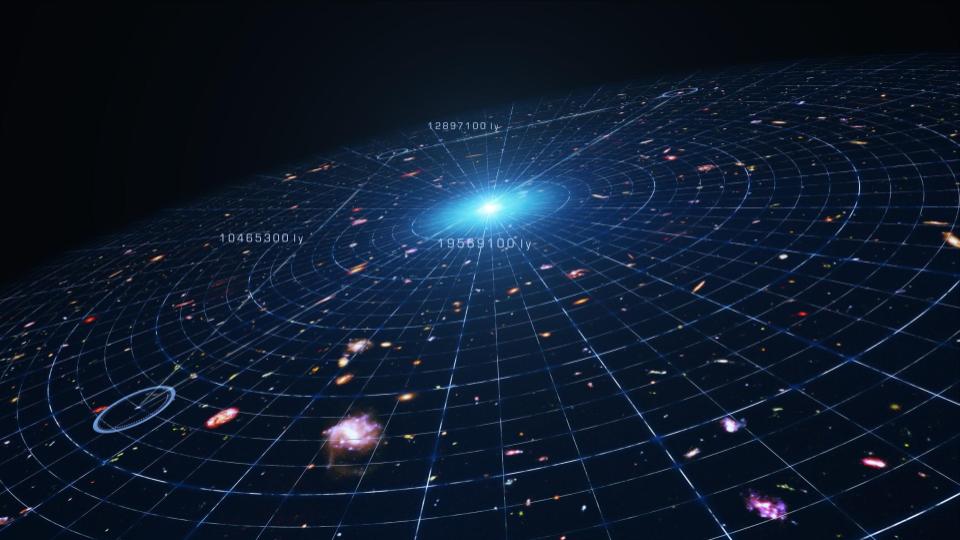The Hubble Space Telescope continues to give us amazing views and science, 30 years later. Here are a couple of new stories that help us appreciate this amazing tool of science.
Yesterday’s breaking news more than compensated for the past few week’s of slow news. From turning lead into gold with neutron star mergers, to discovering an earth-like planet, to learning about a star that will explode in the lifetime of some of our younger audience members, today’s news goes on and on and on.

While all of us have been eagerly waiting to see if Betelgeuse will go boom, a team of astronomers from Louisiana State University has been calculating the explosion date of a different system, V Sagittae. This research was presented by Brad Schaefer and done in collaboration with Juhan Frank and Manos Chatzopoulos.
Stars self-destruct in a variety of ways. Some of them explode as a result of a sudden collapse when they run out of nuclear fuels. Some of them explode when they eat too much of a neighboring star and collapse under the weight of excess mass. And sometimes, stars spiral together and burst as they merge, such as was seen in the kilonova event with two merging neutron stars in 2017.
The event this team is predicting for V Sagittae isn’t any of these kinds of events. It is instead something that will happen when two stars merge together violently, but without actually going supernova. Schaefer used the phrase “merge burst” to describe the event. People – maybe some of you – will see a new bright star flare into existence when a white dwarf star merges with a more massive peer. This is a unique system in our stellar catalogues; there is no other white dwarf star observed to be in this kind of a close orbit with a more massive star. This is a rare combination because large stars evolve faster than small stars, and to get a system with a more evolved smaller star requires something remarkable, such as two stars forming separately but getting gravitationally bound together later in their lives.
Over the past hundred years, observers have watched V Sagittae and seen novae associated with the explosion of built up material that flowed from the massive star onto the white dwarf. Put differently, material is streaming from the giant star onto the white dwarf, and when the pileup gets large enough, it explodes and we see those explosions as repeating and cataclysmic explosions. Over time, this system has gotten brighter and brighter in a way that can be explained as the two stars spiralling together. By estimating the current separation and the rate the stars are moving together, it’s possible to set a “go boom date.” And that “go boom date” is 2083 (give or take a decade or so). When this happens this star will go from just visible in a small telescope to as bright or brighter than Sirius, currently the brightest star in the sky. According to the press release, “The end result of the merger will produce a single star with a degenerate white dwarf core, a hydrogen-burning layer, surrounded by a vast gas envelope mostly of hydrogen.”
We could talk more on this object, but there is so much more news to cover, so we’re going to conclude here and work to get Brad Schaefer to join us as a future guest, here on the Daily Space.

On Monday, the TESS Mission announced the discovery of a rocky Earth-sized planet in the habitable zone of an M-dwarf star. This is TESS”s first such discovery. Catalogued as TOI700d, this world is one of 3 known in this system. The team ran 20 atmospheric models to try and determine if the world could be habitable, and for some of the models the answer was “If you find Chicago habitable, you’d probably be fine there.” While follow-up observations with Spitzer made it possible to measure the world’s size and mass, it wasn’t enough to actually measure the atmosphere, and with a distance of 100 ly, it may not even be possible for JWST to figure out if this world may have life. But… this looks like an earth-massed rocky world in a habitable zone. This is it folks, we found someplace that is meteorologically going to be unlike anything we’ve experienced, but geophysically may be as familiar as the world we walk on.

- NASA’s TESS Mission Uncovers Its 1st World With Two Stars (NASA)
- Surprise! TESS Shows Ancient North Star Undergoes Eclipses (NASA)
TESS also announced the discovery of a planet orbiting two stars, such as the planet Tatooine in the Star Wars series, and they found that the excellently named alpha Draconis is made of two stars that eclipse one another. Also known as Thuban, this system has long been known to be two widely separated, non-interacting stars. It is actually one of the brightest binary systems we know of! Somehow, however, no one had previously noticed that the stars periodically eclipse one another. The brightness is likely the reason. Most detectors will get saturated looking at this system, and will be as effective at measuring its brightness as a thimble would be at measuring the volume of a bucket of water that is poured in all at once. Now we know that for about 6 hours every 51.4 the system goes into a primary eclipse. And here is the crazy factoid this leads to: Thuban was once the Pole Star, which means that people navigated by the light of two Suns that alternating for the primary role of true north.

- New evidence shows that the key assumption made in the discovery of dark energy is in error (Yonsei)
There was so much more news we could report, but we’re going to save most of it for later this week when we expect things to slow down a folks work to recover from AAS, which ends Wednesday. We do want to highlight one more release we’re still not sure about. A team of South Korean astronomers has done a new and careful analysis of the host galaxies of type 1a supernovae, and has looked for trends in the relationship between the kinds of stars they have and the brightness of the supernovae they produce. It’s long been recognized that there is some scatter in the brightness of these exploding systems, and they find a correlation between the luminosity of the supernovae and the stellar populations of their host galaxies. This work, which is the result of 9 years of detailed observations and analysis using the Las Campanas observatory and the 6.5-m multi-mirror telescope, seems to indicate that as the universe and its stellar populations have aged, the type 1a SN produced have also changed. This result, if true, is one of those things that will instantly over turn 2 decades of research. Type 1a supernovae are treated as standard candles that are assumed to have the same average brightness across all of time. If they are actually changing in average brightness, then our most distant measurements of the universe are based on a bad assumption. In their analysis, this team, which is led by Young-Wook Lee, finds that Dark Energy is no longer needed to explain our universe’s expansion. They admit that extraordinary results require extraordinary evidence, and this work will need replicated. If it is replicated, the biggest question in astronomy goes away as just an – oops, we made a bad assumption that led us down a rabbit hole.
It means folks like Adam Reiss who got the Nobel prize have to ask themselves some hard questions and we need to think through the justifications we have today for the telescopes we’re building to explore dark energy in the future; telescopes like the WFIRST mission. It means we may be able to get around the problem of the Hubble Constant looking different at different times by just eliminating Dark Energy from our equations. And those equations would actually be way easier to work with – but this is only if this paper is true.
This is just one publication, but it is by one team that is large, worked hard, and studied this for 9 years, and is publishing their paper in the Astrophysical Journal. Pamela, who wrote this, is concerned that the results aren’t going to be treated to open consideration as readily as they would if they came from a team at Princeton, Stanford, or Yale. They need to be considered however, and someone needs to replicate this to see if it holds up. For now… this is the story we’re going to be watching, because let’s face it, Dark Energy makes no sense and this would be one hell of a graceful way to get ourselves back into a more comprehensible story of our universe.
<———————>
And that rounds out our show for today.
Thank you all for listening. The Daily Space is produced by Susie Murph, and is a product of the Planetary Science Institute, a 501(c)3 non profit dedicated to exploring our Solar System and beyond. We are here thanks to the generous contributions of people like you. Want to become a supporter of the show? Check us out at Patreon.com/cosmoquestx
Each live episode of the Daily Space is archived on YouTube. If you miss an episode on Twitch.tv, you can find it later on youtube.com/c/cosmoquest. These episodes are edited and produced by Susie Murph.
We are here thanks to the generous contributions of people like you who allow us to pay our staff a living wage. Every bit, every sub, and every dollar committed on Patreon.com/cosmoquestx really helps. If you can’t give financially, we really do understand, and there are other ways you can help our programs. Right now, the best way you can help is to get the word out. Let your friends know, share our channel to your social media, or leave a recommendation. You never know what doors you are opening.


 We record most shows live, on Twitch. Follow us today to get alerts when we go live.
We record most shows live, on Twitch. Follow us today to get alerts when we go live.